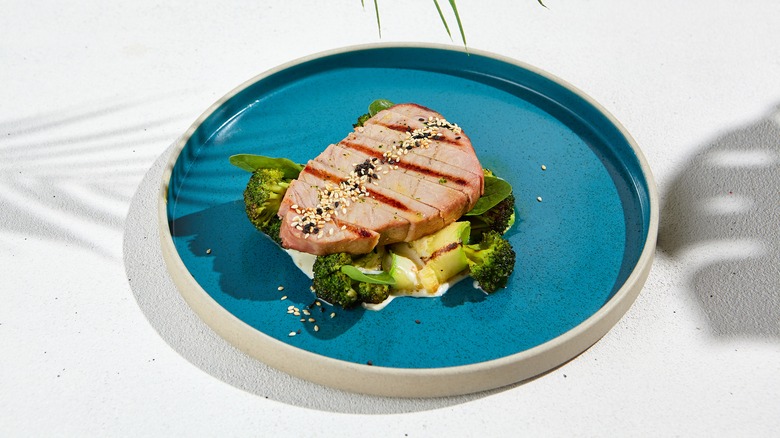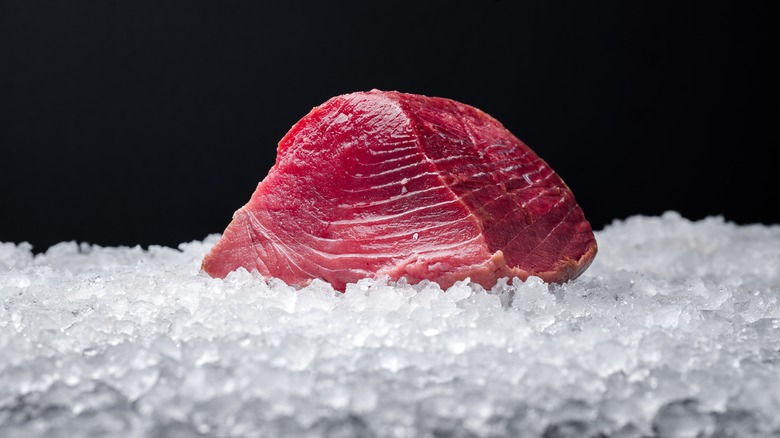Europe Is Addressing Widespread Tuna Fraud By Limiting Additives
When you crack open a can of tuna, how can you be sure you're getting the real deal? In recent years, fish fraud has evolved into less of an epidemic than a commonplace annoyance in the public food sphere. In 2021, when Subway faced a class-action lawsuit alleging that its tuna was fake, The New York Times conducted a PCR test of Subway's tuna and concluded, "No amplifiable tuna DNA was present in the sample ... Therefore, we cannot identify the species." These findings meant that either the tuna was so heavily mixed with non-tuna ingredients that its genetic code couldn't be detected, or else it just wasn't tuna at all. (Doesn't sound great, either way.)
That's essentially the same principle behind imitation crab meat, which has earned the charming nickname "the hotdog of the sea." Per Healthline, imitation crab is made from something called "surimi," which is washed, deboned, miscellaneous fish flesh ground into a paste and formed into crab-meat shapes. Any actual crab meat in the mix is added after the fact, and only in sparse amounts for flavoring. Often, there isn't any crab meat in there at all. But, the difference is, when you purchase imitation crab meat, the name itself lets you know you're getting fake fish. When you buy fake tuna at the grocery store, the label usually just says "tuna" — that is, until now. This week, Europe is addressing widespread tuna fraud by limiting additives.
A move for quality assurance
According to Food Safety News, 51 tons of additive-filled tuna were confiscated from 11 countries across the European Union in 2018. Shortly thereafter, a 2020 test of Belgian tuna found that 16 of 29 samples contained dangerous amounts of ascorbic acid. In 2013, Oceana published findings that U.S. fish labeled as "tuna" was mislabeled 59% of the time. That means, if you bought tuna salad from your local supermarket, there was a greater likelihood that it wasn't tuna than it was.
That's why the European Commission rolled out a new restriction this week on tuna additives to help combat fish fraud. Per the new rule, which takes effect at the end of October, no more than 300 mg of ascorbic acid, sodium ascorbate, and calcium ascorbate can be used per kilogram of tuna. These three additives were previously used as antioxidants in tuna, but they were also used to manipulate color, creating the illusion of freshness in fish that wasn't quite so fresh. According to the commission, eating enough of these additives can cause histamine toxicity (aka scombroid poisoning).
Per the American Academy of Allergy, Asthma, and Immunology, histamine toxicity is a type of food poisoning that happens when too much histamine builds up in the body. When fish are consumed, the chemical histidine is naturally converted into histamine. Some fish, including tuna, include higher levels of histidine, which makes their consumption naturally more susceptible to such issues. In many cases, the body's response to the excess chemical can resemble that of an allergic reaction. (Yikes.)
Before the European Commission's new rule, there were no regulations on the number of additives allowed in tuna. Now, you can hopefully enjoy your spicy tuna nigiri in peace.

